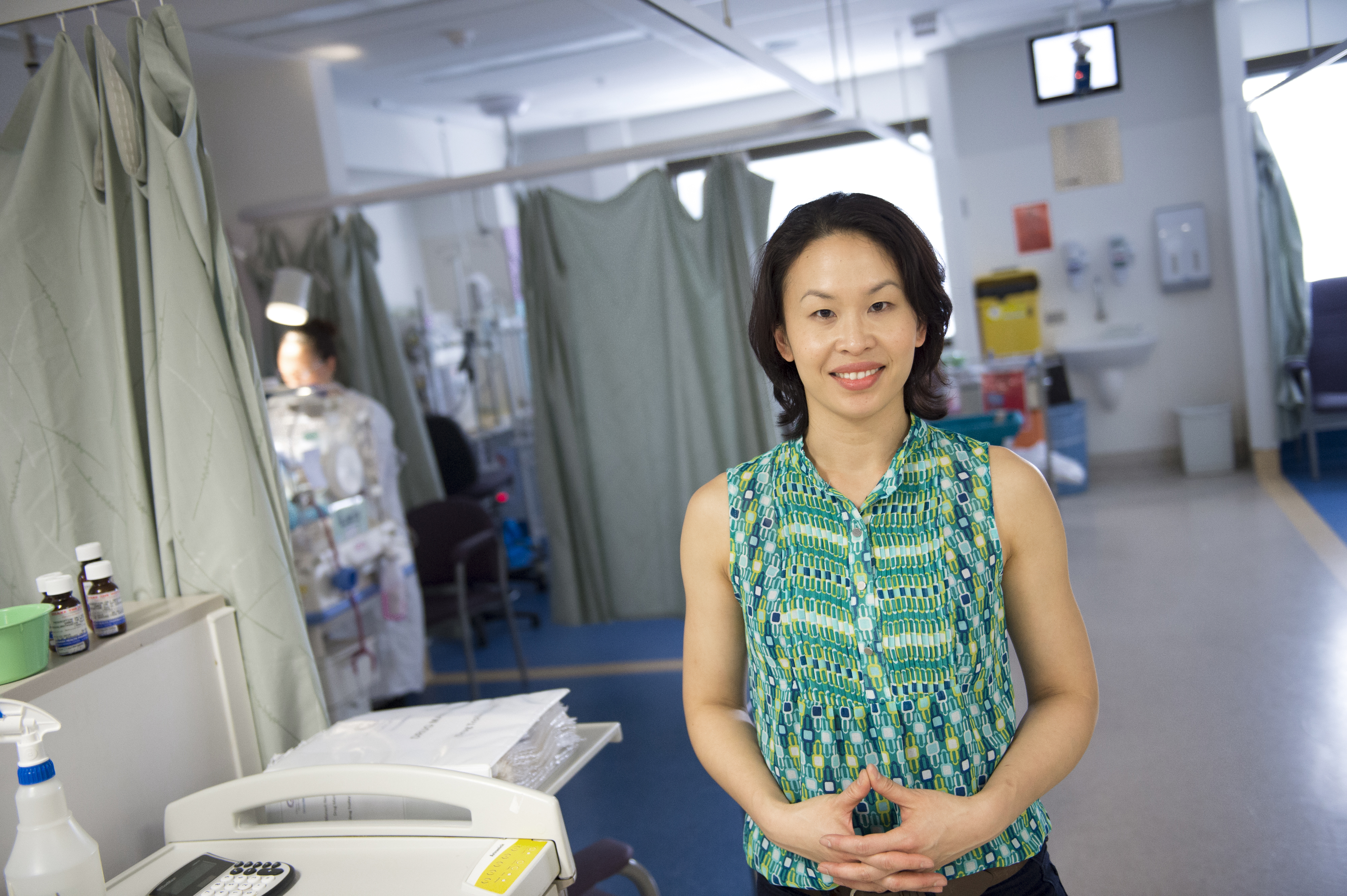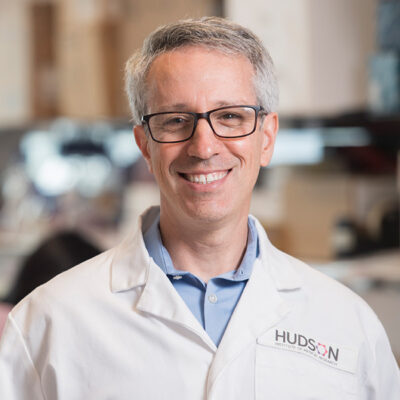Breathing life into patients with ‘irreversible’ lung disease
By Hudson Institute communications. Reviewed by Associate Professor Rebecca Lim

Lung fibrosis patients could soon inhale ‘droplets’ of tiny particles derived from stem-like cells found in the human placenta in an effort to repair ‘irreversible’ deadly scarring of the lungs, thanks to world-first research.
The regenerative medicine treatment could one day form an alternative for patients with the disease who aren’t eligible for a life-saving lung transplant.
A preclinical study led by Dr Rebecca Lim with first author, Dr Jean Tan at Hudson Institute of Medical Research has been published in the journal, Stem Cells Translational Medicine. The study includes collaborators from Monash University, Boston Children’s Hospital, Cambridge Stem Cell Institute, Harvard University and La Trobe University.
Dr Lim says in the preclinical study, amniotic exosomes – nanoparticles derived from stem-like cells found in the amniotic membrane, the innermost part of the human placenta which is usually discarded in the afterbirth – were shown to ‘kick-start’ the repair of stiff, fibrotic lung tissue.
Lung fibrosis facts
- Idiopathic pulmonary fibrosis, or lung fibrosis, is an irreversible disease that progressively scars the lungs to the point where sufferers are unable to breathe.
- The only cure is a lung transplant, but not all patients are eligible for one. In the absence of a lung transplant, the mortality rate is 100 per cent.
- While drugs can slow the progression of the disease, the only treatment is lung transplantation.
- The average survival period after diagnosis of lung fibrosis is just two to four years.
- The cause of the disease is unknown.
- In Australia, 2,300 new cases of idiopathic pulmonary fibrosis are diagnosed every year.
Boosting lung repair in lung fibrosis
“Our preclinical study presents promising data that suggests exosomes could be used to treat lung fibrosis,” Dr Lim, head of the Amnion Cell Biology research group, explains.
“Exosomes particles have similar properties to stem cells but are more practical to handle – much more like using pharmaceutical drugs compared to living cells.”
The exosomes are administered as droplets through the nose, and as they are inhaled, these exosomes make their way into the lungs where they start the repair process.
“We found that these exosomes reduced and reversed lung inflammation, and also activated the growth of stem cells in the lungs. The exosomes boosted lung repair and improved lung function,” said Dr Lim.
The exosomes were also shown to promote the growth of stem cells in tiny air sacs in the lungs, which allow us to breathe and which become stiff and inactive during lung fibrosis.
Dr Lim, who is at the forefront of next generation of cell-free regenerative medicine in Australia and internationally, suggests patients could one day enjoy the benefits of cell therapies without the need to administer stem cells.
“These exosome therapies are a type of regenerative medicine, without the need for the stem cells themselves,” Dr Lim says.
What are amniotic exosomes and how do they differ from stem cells?
Despite years of investment and research activity in stem cells, it has proven difficult and cost prohibitive to manufacture stem cells at commercial quantities to take to the mass market. Issues with cost, manufacture, storage and transport have prevented their widespread use. Therefore, few patients have been able to benefit from cell therapies. Exosomes are nanoparticles that are present in almost all body fluids, including blood, urine and stem cell cultures. Amniotic exosomes are derived from cells, called amniotic epithelial cells, which are found in the innermost membrane of the human placenta. The exosomes have similar qualities to the stem cells themselves and contain ‘cargo’ such as proteins that are released from stem cells. Unlike stem cells, these exosomes can be manufactured at scale at a low cost, freeze-dried, transported, then reconstituted and administered to patients in hospitals, like most medicines.
Journal | Stem Cells Translational Medicine
Title | Amnion Epithelial Cell-Derived Exosomes RestrictLung Injury and Enhance Endogenous Lung Repair
View publication | https://doi.org/10.1002/sctm.17-0185
In this article
About Hudson Institute
Hudson Institute’ s research programs deliver in three areas of medical need – inflammation, cancer, women’s and newborn health. More
Hudson News
Get the inside view on discoveries and patient stories
“Thank you Hudson Institute researchers. Your work brings such hope to all women with ovarian cancer knowing that potentially women in the future won't have to go through what we have!”



